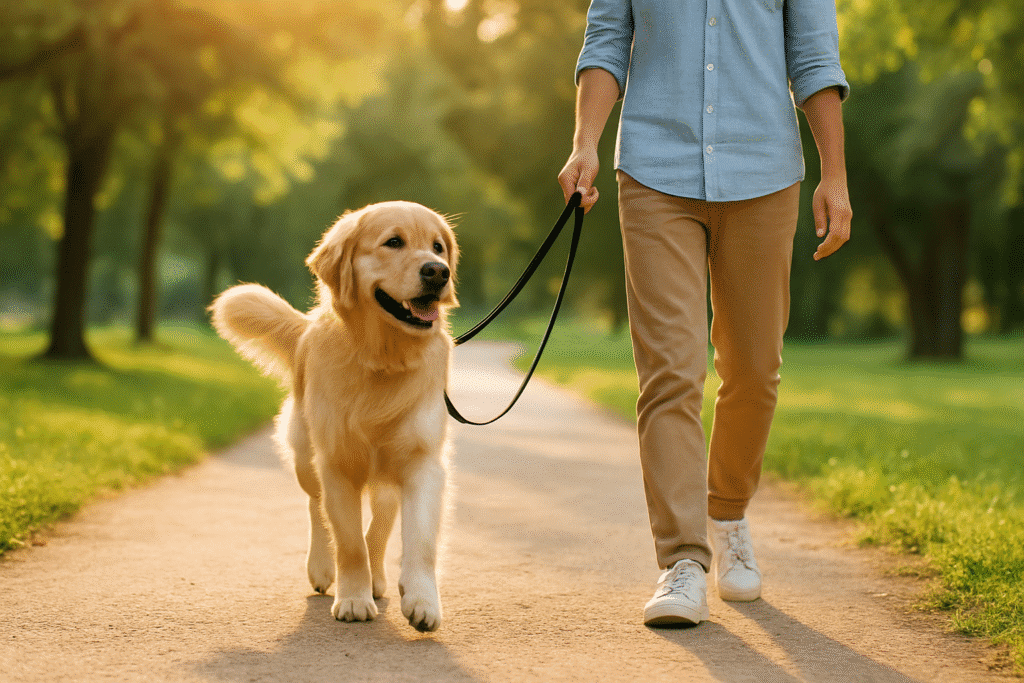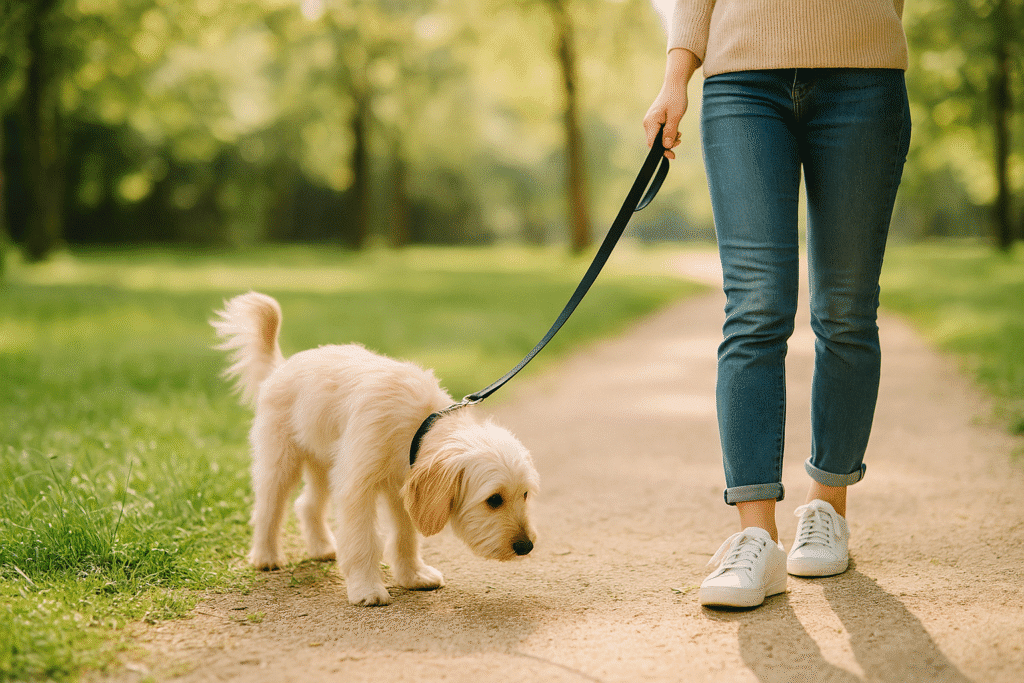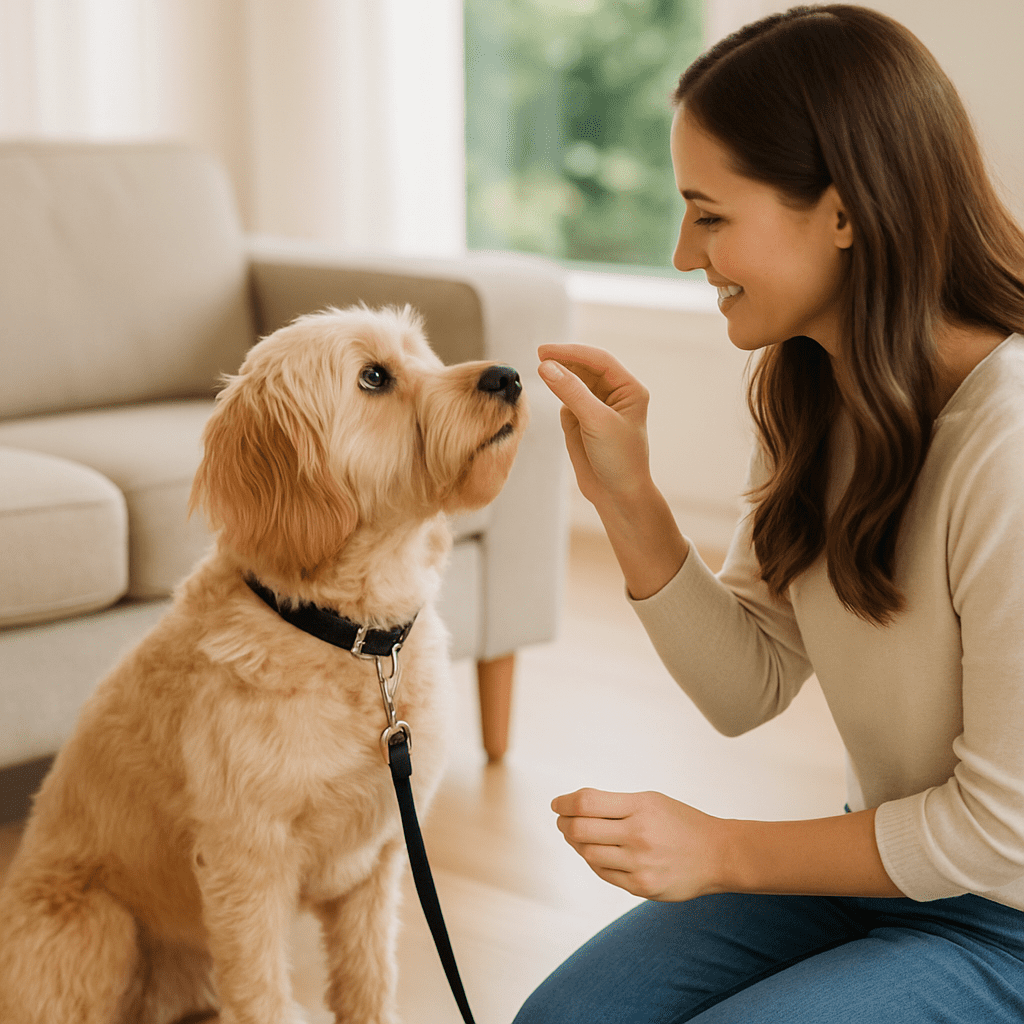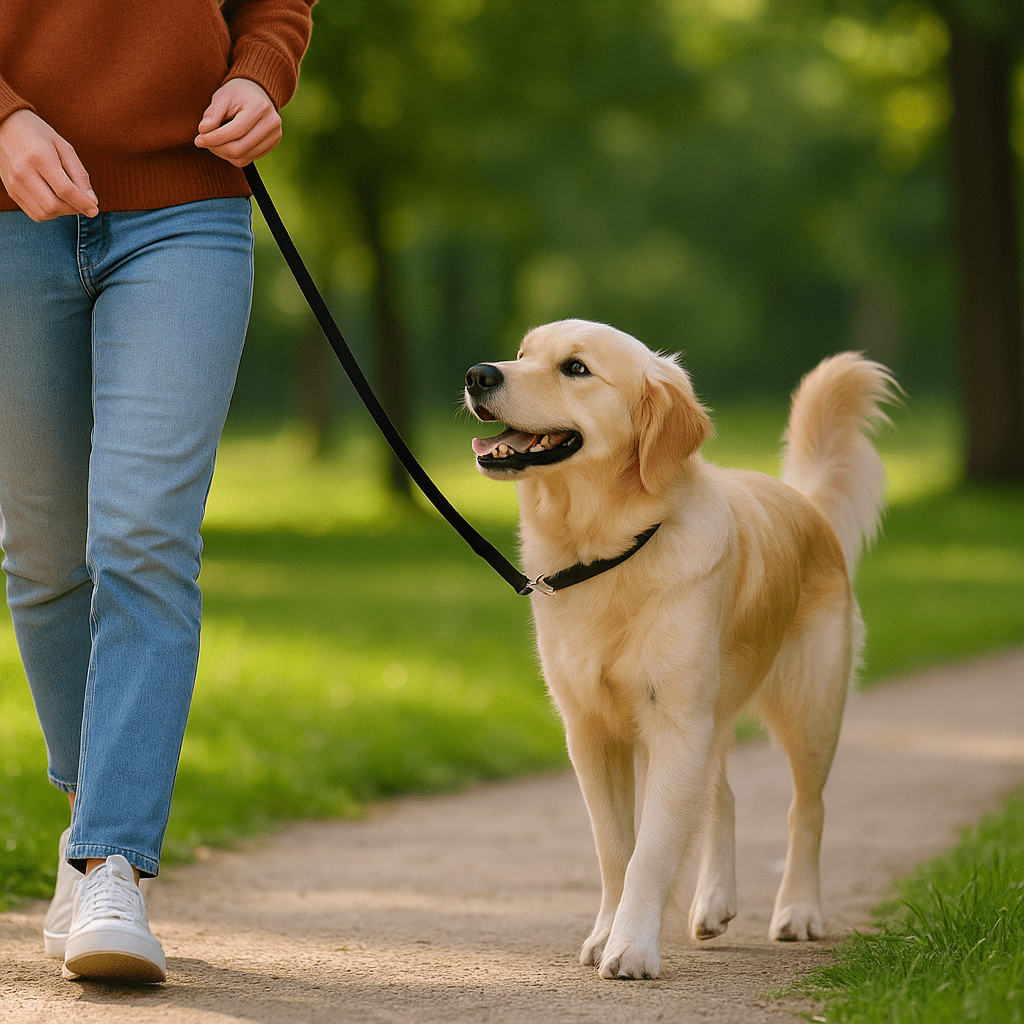Struggling with a leash-pulling pup? 🐾 This Stop Dog Pulling on Leash guide shows how to train your dog to walk calmly beside you in just three days. Learn easy, positive methods to make every walk relaxing and fun — no yelling, no stress, just results!

Why Dogs Pull on the Leash — Understanding the Root Cause
To Stop Dog Pulling on Leash effectively, first understand *why* it happens. Dogs naturally walk faster than humans, and pulling is often a sign of excitement, curiosity, or lack of training. When they see interesting smells, people, or other dogs, instinct takes over.
Instead of punishing pulling, focus on teaching your dog that calm walking = progress. This builds trust and ensures long-term leash manners.
Common Reasons for Pulling
- Excess energy or lack of daily exercise
- Strong prey drive or curiosity
- Improper leash or collar fit
- Reinforced behavior (they pull, they move forward — success!)
- Fear or overstimulation during walks

Day 1: Foundation — Teaching Focus & Calm Starts
Before heading outside, practice indoors or in your yard. The goal is to help your dog focus on *you*, not the environment. Use treats, praise, and patience.
1. Use High-Value Treats
Pick irresistible rewards like chicken bits or cheese. Reward eye contact, calm posture, and walking near your leg.
2. Reward Position, Not Distance
Every step your dog walks beside you calmly — mark it with a “Yes!” and treat. Don’t wait for a full walk; reward often at first.
3. Set Walking Cues
Use a verbal cue like “Let’s go!” before moving. Consistency builds recognition and focus.

Day 2: Movement & Redirection — Stop Dog Pulling on Leash Naturally
1. The “Stop-and-Go” Technique
When your dog starts pulling, stop walking. Don’t yank — simply freeze. Wait until the leash slackens, then move forward again. Your dog will learn that pulling *stops* the fun.
2. The “Turn-Around” Trick
If pulling continues, calmly turn and walk in the opposite direction. This teaches your dog to pay attention to your direction and pace.
3. Reward Loose Leash Walking
Every time the leash stays slack for 5–10 seconds, offer praise and a small treat. Reinforce success often during this phase.
4. Practice Short Sessions
Multiple 5-minute sessions per day are better than one long walk. This keeps focus sharp and frustration low.

Day 3: Tools & Advanced Tricks for Calm, Controlled Walks
Once your dog understands the basics, introduce gentle walking tools that support training — not punish it.
Recommended Leash Tools
- Front-clip harness: discourages pulling without hurting your dog.
- Standard 6-foot leash: allows control while giving enough freedom.
- No retractable leashes: they encourage pulling behavior.
1. Use “Change of Direction” Games
During walks, randomly change directions and encourage your dog to follow. This keeps them mentally engaged and focused on you.
2. Add “Watch Me” Cue
Say “Watch me” when distractions appear. Reward eye contact immediately — this redirects focus away from triggers.
3. Cool-Down Phase
End each walk calmly. Allow a sniffing break before returning home. This teaches your dog that calm behavior brings freedom.
Troubleshooting: Why Your Dog Still Pulls
- Your leash tension is inconsistent.
- You reward too late or too infrequently.
- Your walks are too long or too stimulating.
- Your dog needs more exercise before training walks.
If you’re struggling, revisit basics or practice indoors with fewer distractions before heading outside.
Leash Safety & Body Language Tips
Never use choke chains or prong collars — they cause pain and fear. Instead, rely on positive reinforcement and communication. Keep your leash relaxed but short enough to maintain control in busy areas.
For more leash-training insight, check out our Loose Leash Walking Guide.
Vet & Trainer-Approved Insights
Veterinary behaviorists emphasize that calm, positive walking routines prevent injuries and improve mental health for both pets and owners. Avoid punishment or jerking motions that may damage your dog’s neck or erode trust.
For additional tips, visit Pet Health Network — Dog Behavior & Training.

Frequently Asked Questions (FAQ)
Can I really stop my dog from pulling in 3 days?
Yes — with short, consistent sessions using positive reinforcement. Most dogs learn quickly once they realize pulling doesn’t get them forward.
What if my dog is strong or large?
Use a front-clip harness for extra control. Avoid retractable leashes and practice “stop-and-go” in a safe space first.
Should I use a choke collar?
No. These can cause injury and fear. Stick to humane tools and reward-based techniques.
How long should training sessions last?
Start with 5–10 minutes, multiple times a day. Consistency beats intensity.
What if my dog pulls only when seeing other dogs?
Work on “Watch Me” cues and increase distance gradually until your dog can stay calm near distractions.
🐕 Ready for Stress-Free Walks?
This Stop Dog Pulling on Leash Guide helps you build calm, happy walking habits without frustration. Start today, and enjoy every walk together. For more guides, visit our Training Tips Section.
✅ Excerpt (Summary)
The Stop Dog Pulling on Leash Guide teaches quick, reward-based training to transform your walks. Learn stop-and-go, turn-around, and focus cues to stop pulling in 3 days — for relaxed, enjoyable walks with your best friend. 🐶🦮
